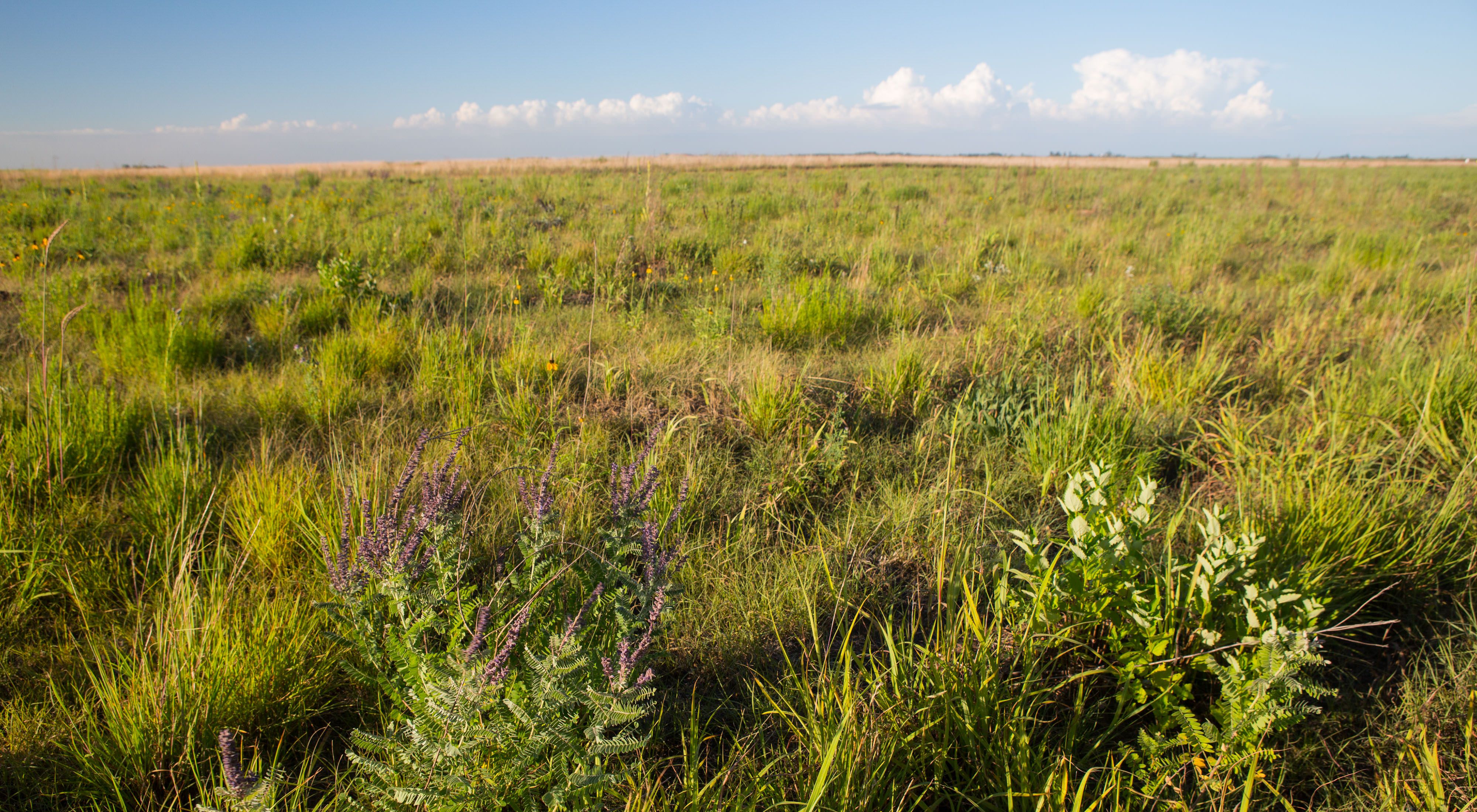Description
Glacial Ridge is the largest prairie and wetland restoration project in U.S. history. When The Nature Conservancy and its partners initiated the project in 2000, only about 3,000 acres of the more than 24,000 acres purchased by the Conservancy was native prairie; the rest had been used for gravel extraction, crop production and cattle and sheep grazing. The restored grasslands and wetlands provide excellent habitat for prairie nesting birds, threatened prairie plants and wildlife.
The land acquired by the Conservancy forms the core of what is now the Glacial Ridge National Wildlife Refuge, which in time may expand to more than 37,000 acres. The refuge, which is part of the 150-million acre National Wildlife Refuge System, is expected to include more than 8,000 acres of wetlands and about 20,000 acres of tallgrass prairie.
Why the Conservancy Selected this Site
Tallgrass prairie originally covered more than 18 million acres in Minnesota but only about 1 percent remain. The Glacial Ridge project presented a significant opportunity to the Conservancy and its partners to preserve tallgrass prairie on a large scale. As a result, the Conservancy purchased more than 24,000 acres in 2000 and proceeded with restoration efforts. In 2004, Glacial Ridge was designated a national wildlife refuge.
In addition to its regional importance for migratory birds, native plants and wildlife, the restoration of Glacial Ridge will help improve water quality for the city of Crookston and help reduce flooding in the Red River Valley.
Before the property was protected and restored, threats included habitat fragmentation and invasion by exotic species (non-native plants and animals). Beyond its size, the Glacial Ridge Project is also significant because it connects to other wildlife and recreational areas.
What the Conservancy Has Done/Is Doing
The Conservancy and its partners have restored most of the property originally acquired in 2000 back to prairie and wetlands. Most of the property has been enrolled in the Natural Resources Conservation Service's Wetlands Reserve Program and transferred to the U.S. Fish and Wildlife Service so that it could be added to the Glacial Ridge National Wildlife Refuge.
In order to restore the hydrology and provide wildlife habitat, the Conservancy worked with landowners and officials to fill in 103 miles of ditches, including 19 miles within Glacial Ridge. The ditches were dug to drain the land so that crops could be planted. By restoring the site's hydrology to its original natural condition, more than 200 wetlands were restored.
An integral part of the neighboring communities, Glacial Ridge provides ecological, educational and economic benefits to Polk County and the city of Crookston. Two wells on the property supply clean water to Crookston, and nearby agricultural lands are being enrolled in perpetual conservation easements. The Conservancy also established an endowment in order to provide continued tax revenue to local government entities.
About 400 students every year enjoy a variety of opportunities at Glacial Ridge. Students from Crookston and Red Lake Falls area schools have attended the site’s annual Earth Day since 2003, University of Minnesota-Crookston students have conducted a number of field trips to the property, and students from Red Lake Falls maintain a plot of land for their science classes. Watch a video of Red Lake Falls elementary students using technology to study the ecology at Glacial Ridge.
Awards and Recognition
The restoration of Glacial Ridge has earned state and national recognition including:
- The Minnesota Environmental Initiative Award, 2003
- The Nature Conservancy's Conservation by Design Award, 2003
- One of 25 projects selected in 2005 to present at the White House Conference on Cooperative Conservation
Partners
Glacial Ridge has benefited tremendously from significant contributions provided by a large number of partners including:
- Natural Resources Conservation Service (NRCS)
- U.S. Fish & Wildlife Service
- U.S. Geological Survey
- Environmental Protection Agency
- Minnesota Department of Natural Resources
- Minnesota Pollution Control Agency
- Minnesota Department of Commerce
- University of North Dakota
- North Dakota State University
- South Dakota State University
- Concordia College
- University of Minnesota, Crookston
- Polk County
- City of Crookston
- Crookston Convention and Visitors Bureau
- City of Red Lake Falls
- Red Lake County
- Red Lake River Corridor Group
- Red Lake River Watershed District
- Red River Basin Board
- Red River Flood Damage Work Group
- Ducks Unlimited
- Minnesota Waterfowl Association
- Bush Foundation
- Nature Northwest
- Audubon Society
- East Polk Soil and Water Conservation District
- Environment and Natural Resources Trust Fund
- Legislation Commission of Minnesota Resources
- North American Wetlands Conservation Council
- Sandhill River Watershed District
- Northwest Minnesota Council
- Northwest Regional Sustainable Development Partnership
- Pembina Trail Resource Conservation and Development
- West Polk Soil and Water Conservation District
- Other neighboring landowners and residents
